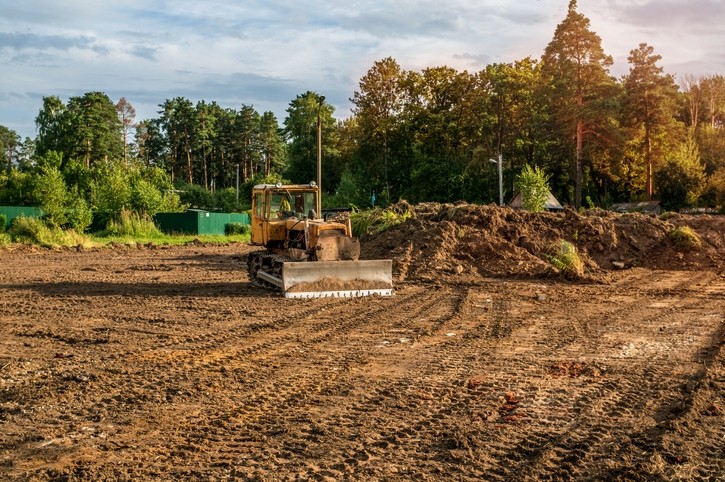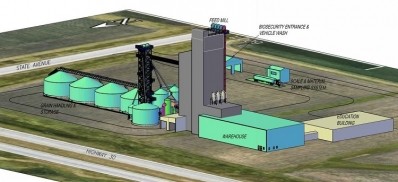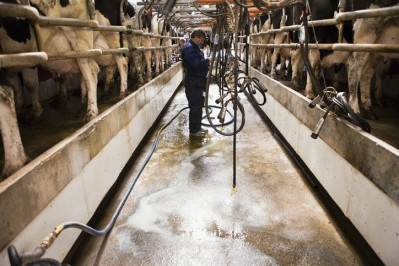University of Idaho to build the largest research dairy in the US

The Idaho Center for Agriculture, Food and the Environment (CAFÉ) was designed to provide research and education opportunities, public outreach, economic development address industry needs, said Jim Miller, director of development with the college of agricultural and life sciences at the University of Idaho.
“As the dairy industry in Idaho has increased in importance, we see that it is important for the university to match that level of relevancy,” he added.
In the last 10-15 years, the state has moved from number 14 to number three in dairy production, he told FeedNavigator.
“We’ve seen a great influx of producers and we’ve seen great increases in herd size – southern Idaho is set up really well for dairy production.”
The planned research and outreach facilities were developed as a way to address the top agricultural commodity in the state and provide relevant research for producers, he said.
“We used to be plant-based ag economy and then [there was] a big switch – there are a little over 600,000 dairy cows in the state now and some really large producers.”
“That’s one thing with the research dairy, we really wanted to make it scalable for industry, so the average size of a dairy [farm]in Idaho now is 1,300 [cows], but there are some large producers with 11,000, and 15,000 [cows], and there’s one [farm] that’s gearing up to have 40,000 (dairy cows),” he said.
“We have a research dairy on campus in Moscow, and it includes around 100 cows, but when you do research [at that scale] even a 1,000 cow producer says, ‘That’s great, but how do I apply that to my operation?’”
“Our new research dairy [facilities] will involve 2,000 dairy cows, so [the results will be] easily scalable … [and can be applied] to some of the other large producers in the area,” he added.
The university bought the first of three properties earlier this year with support from the Idaho Dairymen’s Association and the second piece of land for the three-stage project was purchased in July, he said. That six-acre location is intended to house the education and outreach site.
The first two portions of the project – the dairy and research location and a public outreach center are set to be open by 2023, he said. The third piece, a food processing pilot plant is set to follow work on the first phases.
“We needed to set a definite timeline so this … is not a never-ending project – we’re going to make progress and make this happen. So, in 2023, we’re going to milk cows,” he said of the timeline. “If you back up from that, we plan on spending a year and a half on design and fundraising, and then a year and a half on construction, and then [we will have a] very similar [plan] with the discovery complex.”
Facility details and funding
The project is expected to cost about $45m, with the university set to provide about $15m, and the state legislature agreeing to provide $15m, of which $10m has already been allocated, said Miller. The remaining $15m is set to come from fundraising and industry stakeholders.
“We’re about a third of the way complete on that $15m goal, so we’re making progress and companies are coming on board left and right as we start to unveil the plans and purchase the property and have a stake in the ground,” he added.
“It’s a research dairy and demonstration farm – we’re going to do agronomic research there and that’s located in Rupert, Idaho, which is part of the south-central area called the Magic Valley,” he said of the first site acquired.
The 640-acre site already has a permit for concentrated animal agriculture and has been prepared for a dairy to be constructed.
Some of the feed crops needed to support the herd can be cultivated on the site, but will not be able to meet all the needs, he said. Feed will be purchased locally, and there are several animal feed companies that could become partners for the project, he added.
The site is not expected to have its own feed mill, but likely will have a commodity barn and mixer, Miller said. It also has four pivots to allow for agronomic research. There also will be a milk quality laboratory, office space for graduate students and faculty doing long-term research and classroom space, he said.
“The second part of the three-part model is the education and outreach center, we’re calling that the discovery complex – that’s really the public-facing part of CAFÉ, and that’s where we can tell the farm to table story, we can tell the story of water and power in the Magic Valley, and the importance of that to agriculture,” he said.
The third facility is set to be a food processing plant developed in conjunction with the College of Southern Idaho (CSI), he said.
Feed, technology research
The dairy site will be the main location for research work, said Miller.
“An important piece is the nutrition side of things, and so we’ll be set up to do just about any kind of research that we want,” he said. “The robotic systems, they’re very specific on the ration they feed the animal and are very easily manipulated and trackable, so you can manipulate the feed for a certain cow, or a certain set of cows – you can really see what that does to milk production.”
Project members have also been speaking with companies interested in studying encapsulation techniques and pharmaceutical companies, he said.
“Some pharma companies … want to do large scale research here because we’ll have this large herd and we can do large replicated trials – it will be the largest research dairy in the US by far.”
The enclosed dairy barn is projected to have a robotic rotary milking system and a robotic box stall milking system to allow for efficiency research, said Miller.
“We want to do research at the same location with potentially the same cows on which system works better,” he said. “That’s a big question right now in the robotics system – is rotary or box stall better?”








